Excitonic Frontiers

Scientific discussion meeting organised by Professor Sandrine Heutz, Professor Jenny Nelson FRS, Professor Garry Rumbles and Professor Martin Heeney.
Processes involving the photoexcited states of matter, or excitons, underpin some of today’s most important and diverse scientific advances, from solar cells, to quantum technologies via photosystems and catalysis. This meeting brings together world-leaders from traditionally separate fields to share views on the fundamental science, exploitation and characterisation of excitons, aiming to generate radical advances in exciton science and technology.
Meeting papers will be published in a future issue of Philosophical Transactions of the Royal Society A.
Attending this event
This meeting is intended for researchers in relevant fields.
- Free to attend.
- Both in person and online attendance is available. Advance registration is essential. Please follow the link to register.
- Lunch is available on both days of the meeting for an optional £25 per day. There are plenty of places to eat nearby if you would prefer to purchase food offsite. Participants are welcome to bring their own lunch to the meeting.
Enquiries: contact the Scientific Programmes team
Organisers
Schedule
Chair
Professor Jon Marangos, Imperial College London, UK
Professor Jon Marangos, Imperial College London, UK
Professor Jonathan P Marangos is the Director of the Blackett Laboratory Extreme Light Consortium (XLC) at Imperial College and over his career has made leading contributions to the development of short wavelength coherent sources, strong field physics and ultrafast chemistry and attosecond physics. He has wide experience of both laboratory and facility based ultrafast x-ray science. He was part of the team that recently successfully demonstrated the generation of high power attosecond soft-x-ray pulses at an XFEL. He led research that proved a new x-ray absorption methodology for tracking electron holes in suddenly ionised matter that is now a central plank of the investigations of charge migration in the LCLS Attosecond Campaign. In parallel he has continued to develop ultrafast x-ray sources and measurement methodology with laser driven laser driven time resolved x-ray spectroscopy, recently applying this to measuring sub-20 fs exciton delocalisation dynamics in an organic semiconductor.
| 08:50-08:55 |
Welcome by the Royal Society and lead organiser
|
|---|---|
| 08:55-09:00 |
Chair’s Introduction
|
| 09:00-09:30 |
Exciton Delocalization and Large Coherent States
Their recent work is motivated by the need for robust, large-scale coherent states that can play possible roles as quantum resources. A challenge is that large, complex systems tend to be fragile. However, emergent phenomena in classical systems tend to become more robust with scale. Do these classical systems inspire ways to think about robust quantum networks? This general question and its relationship to quantum coherence and exciton delocalisation will be discussed and the idea of exploiting emergent states will be examined. The talk comprises two parts. First, they will report an experimental method to witness, with femtosecond time resolution, quantum correlations in a coherent state. They show how to obtain a ratio of relative dipole strength of transitions in transient absorption spectra to probe the time dependence of exciton coherence length in excitonic systems. They have demonstrated the method for a J-aggregate in solution, quantifying how the exciton localizes over a picosecond timescale from an initial delocalisation length of about 60 to an equilibrium of 15 molecular units. Second, they will explore the question: is it worth looking for quantum effects in very complex, ‘messy’ systems? Many would argue in the negative. Indeed, the idea that quantum phenomena might underpin unforeseen function in life and other complex systems is viewed with skepticism—skepticism rooted in an influential monograph written several decades ago by Schrödinger. However, given the many relevant new ideas that have emerged over the past decades—including, for instance, more sophisticated understandings of networks, synchronisation phenomena, and advances in solving quantum dynamics for large and complicated systems, they will argue why the time is right to revisit this question. They will propose how the relevant states should differ significantly from typical qubits, and thus will function differently. Professor Gregory Scholes FRS, Princeton University, USA
Professor Gregory Scholes FRS, Princeton University, USAGreg Scholes is the William S Tod Professor of Chemistry at Princeton University. Originally from Melbourne, Australia, he later undertook postdoctoral training at Imperial College London and University of California Berkeley. He started his independent career at the University of Toronto (2000-2014) where he was the D J LeRoy Distinguished Professor. He was appointed Editor-in-Chief of the Journal of Physical Chemistry Letters in 2019. Dr Scholes was elected a Fellow of the Royal Society (London) in 2019 and a Fellow of the Royal Society of Canada in 2009. He served as Chair of Department at Princeton 2020-2023 and Director of an Energy Frontier Research Centre (BioLEC) since 2018. |
| 09:30-09:45 |
Discussion
|
| 09:45-10:15 |
Probing dynamics of chemical bonds in organic chromophores by X-ray spectroscopies
Chemical bonding patterns fundamentally change when molecules dynamically evolve in electronically excited states created by optical excitations. These dynamics give rise to many useful properties and functionalities, which can be resolved in space and time at modern XFEL facilities. In this talk the author will overview some possible measurements that can be done with X-ray lasers suggested by computational investigations. In the first example, the scientists use dynamical simulations to compute X-ray Raman signals, which are able to monitor the coherence evolution in molecular photoswitches. Time-resolved X-ray diffraction can further probe key chemical features during the ultrafast dynamics. In the first example, X-ray Circular Dichroism (XCD) can exploit the localised and element-specific nature of X-ray electronic transitions. XCD therefore is more sensitive to local structures and the chirality probed with it can be referred to as local which in contrast to a conventional Optical Circular Dichroism probing the global molecular chirality. 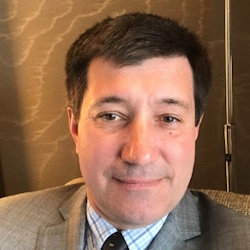
Professor Sergei Tretiak, Los Alamos National Laboratory, USA

Professor Sergei Tretiak, Los Alamos National Laboratory, USASergei Tretiak is a Laboratory Fellow of Los Alamos National Laboratory (LANL). His research interests include development of electronic structure methods for molecular optical properties, non-adiabatic dynamics of electronically excited states, optical response of excitons in conjugated polymers, carbon nanotubes, semiconductor nanoparticles, mixed halide perovskites and molecular aggregates, and the use of Machine Learning for chemistry and materials. |
| 10:15-10:30 |
Discussion
|
| 10:30-11:00 |
Break
|
| 11:00-11:30 |
Exciton Transport and Interactions in the Quantum Regime
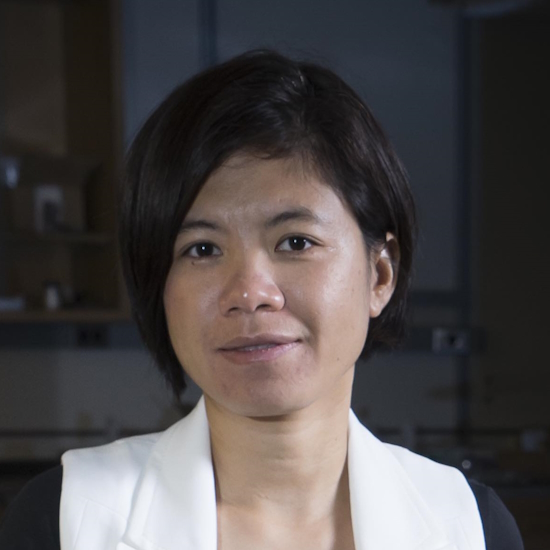
Dr Libai Huang, Purdue University, USA

Dr Libai Huang, Purdue University, USALibai Huang is an expert in ultrafast spectroscopy and microscopy, particularly in the study of energy transport in molecular aggregates, singlet fission materials, and low-dimensional nanostructures. Her work has notably led to pioneering developments in experimental strategies, enabling distinct insights into both spatial and temporal domains. With these unique approaches, the group has uncovered key insights into the nonequlibrium hot carrier transport in perovskite solar cells, the charge transfer dynamics at two-dimensional (2D) interfaces, and the exciton migration in quantum dot superlattices, singlet fission materials, molecular assemblies, and photosynthetic systems. More recently, her research has been expanded to probe the role of quantum coherence, interference, localization in transport, and delve into the realms of strong light-matter interactions, many-body effects, and phase transitions in quantum materials. |
| 11:30-11:45 |
Discussion
|
| 11:45-12:15 |
New look at nanocrystal photophysics with spectator excitons
The spectator exciton experiment follows stepwise changes in nanocrystal absorption with the accumulated number of excitons by comparing pump-probe spectra in pristine nanocrystal samples with that from samples uniformly excited with a progressive number of cold excitons. This approach reveals that unexpectedly 50% of hot electrons are blocked from cooling directly to the band edge in CdSe nano-dots already excited with a single cold exciton due to spin orientation conflicts. In addition this same approach quantifies elusive stimulated emission even if it is masked by much stronger overlapping excited state absorption. It will be shown how these previously undetected observables teach new things concerning band edge electronic structure in quantum confined nanocrystals. 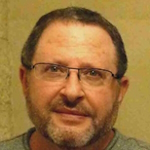
Professor Sanford Ruhman, The Hebrew University of Jerusalem, Israel

Professor Sanford Ruhman, The Hebrew University of Jerusalem, IsraelProfessor Sanford Ruhman is Professor emeritus in the Institute of Chemistry at the Hebrew University of Jerusalem where he has been applying cutting edge ultrafast spectroscopy to study photochemistry in condensed phases, photobiology of protein photoreceptors, and exciton dynamics in advanced materials such as nanocrystals and modern photovoltaics for the last three decades. He is a pioneer of utilising impulsive vibrational spectroscopy to reaction dynamics, and a recognized authority on the photochemical dynamics of retinal proteins. He served as the director of the Farkas Minerva centre for Light Induced Processes at the Hebrew university for several years and as the the chairman of the Institute of Chemistry. |
| 12:15-12:30 |
Discussion
|
| 12:30-13:30 |
Lunch
|
Chair
Dr Jess Wade, Imperial College London, UK
Dr Jess Wade, Imperial College London, UK
Dr Jess Wade is a Royal Society University Research Fellow and Lecturer in Functional Materials in the Department of Materials at Imperial College London. Her research considers new materials for emerging technologies, with a focus on chiral molecular systems.
| 01:30-13:35 |
Chair’s Introduction
|
|---|---|
| 13:35-14:05 |
Metal-to-Metal Charge Transfer in cyanido-bridged FeCo pairs
The rational design of molecules, which exhibit photoswitchable physical properties is a subject of the intense research activity. Chemists have investigated photoresponsive complexes through rational choices of cyanido-based building blocks. Various molecular architectures have been obtained with remarkable properties such as spin crossover, electron-transfer, and photoinduced magnetism. The understanding of the electronic mechanism during the photo-excitation requires the combined use of optical, magnetic and structural probes to better understand the photomagnetic mechanism. In this presentation, the switching properties of dinuclear cyanido-bridged pairs will be analysed using a combination of magnetic, structural and X-ray Absorption Spectroscopy (XAS) measurements. The bulk and local structural measurements have shown the thermal- induced electron transfer. [1] S. F. Jafri et al. J. Am. Chem. Soc., 2019, 141, 3470. [2] C. Mathonière et al. Chem. Comm., 2022, 58, 12098. Corine Mathonière, Institute of Condensed Matter Chemistry of Bordeaux, University of Bordeaux
Corine Mathonière, Institute of Condensed Matter Chemistry of Bordeaux, University of BordeauxCorine Mathonière, born in 1968 in Montluçon (France), received her education in Chemistry at the University of Paris Pierre and Marie Curie, France. Her PhD work was devoted to the optical properties of molecular-based magnetic materials under the supervision of Professor O Kahn in 1993. After a post-doctoral stay in the group of Professor P Day (Royal Institution of Great Britain, London), she joined the University of Bordeaux as associate professor in 1994, then was promoted to professor in 2010. Since 1994, Dr Corine Mathonière has developed at the Institute of Condensed Matter Chemistry of Bordeaux (CNRS) research activities in “Switchable Molecules and Materials molecular” group interested in the synthesis and physical studies of switchable molecular materials. In this research field, she has published 145 articles with more than 6000 citations and has an h index of 44 (February 2020). |
| 14:05-14:20 |
Discussion
|
| 14:20-14:50 |
Exciton and spin dynamics in luminescent molecular materials
The spin of ground and excited levels in molecular materials dictates the exciton mechanisms for any photonic, optoelectronic and quantum technology applications. This talk explores the photo- and spin physics of excitons as revealed by optical and magnetic resonance studies. Where organic semiconductors operate via singlet (spin, S = 0) and triplet (S = 1) excitons, achieving higher luminescence efficiency from these states will generally lead to higher performance, for example in OLEDs. Studies of spin conversion and the orbital-nature of the triplet excitons that dictates luminescence are presented for novel series of fluorescent and phosphorescent emitters. Recent interest in organic radicals containing unpaired electrons has emerged from the design of new materials that undergo efficient light absorption and emission from transitions between doublet spin (S = 1/2) ground and excited levels. As well as being potential candidates for functional emitters in light-emitting devices, opportunities emerge to couple their optical, spin and magnetic properties in molecular excitons that could enable future quantum technology platforms. 
Dr Emrys Evans, Swansea University, UK

Dr Emrys Evans, Swansea University, UKEmrys completed a DPhil at University of Oxford in 2016 with Professor Christiane Timmel. His DPhil was on the photo- and spin physics of light-induced electron transfer reactions implicated in animal magnetoreception. Following this he worked with Professor Sir Richard Friend at the Cavendish Laboratory, University of Cambridge as a Postdoctoral Research Associate (2016-2019). There he began researching molecular semiconductors for optoelectronics. He received a Leverhulme Trust Early Career Fellowship in 2019. In 2020 he started a Royal Society University Research Fellowship at Swansea University. In 2021 he was awarded the Dillwyn Medal for STEMM from the Learned Society of Wales. The design, characterization, and exploitation of optical and magnetic properties in new molecular materials is the focus of his research. Emrys is fluent in English, Welsh and Thai. |
| 14:50-15:05 |
Discussion
|
| 15:05-15:30 |
Break
|
| 15:30-16:00 |
Optical Gating of Molecular Spin Qubits
The optical manipulation of spin quantum states provides an important strategy for quantum control with both temporal and spatial resolution for quantum computing, sensing and communications. While significant progress has been made in the discovery of molecular spin-based qubits with long decoherence times, current challenges are focused on molecular quantum sensors that have long decoherence times, (achieved by isolation from the bath) and strong coupling to the environment (achieved by strong coupling to the bath) required for sensing of external field or analytes. The scientists report here a strategy for coupling molecular spin-based qubits to the bath without sacrifice of decoherence times. Photochromic ligands that undergo isomerization in response to changes in solvation, electric field, temperature, or light can be used to modulate electron transfer-coupled spin transition processes, spin-orbit coupling, and ligand-metal electronic coupling in bound transition and lanthanide metal ions. Visible light irradiation (λexc = 550-600 nm) of a spirooxazine cobalt−dioxolene complex induces photoisomerization of the ligand that in turn triggers a reversible intramolecular charge-transfer coupled spin- transition process at the cobalt center between a low-spin Co(III)−semiquinone doublet and a high-spin Co(II)−bis-semiquinone sextet state. Determination of the spin relaxation and decoherence times of the low-spin Co(III)−semiquinone doublet state reveal slow spin dynamics and decoherence, and a change in the population of the SQ state (ms ± 1/2) qubit state with light modulation. Extension of this strategy to low-spin transition metal (S = 1/2) and lanthanide complexes leads to reversible changes in spin relaxation rate, decoherence time, and g-value with changes in photochromic ligand state, providing a robust strategy for quantum sensing in molecular spin-based qubits. The scientists report here a Cu(II) (N4) photochrome complex (S=1/2) that exhibits a shift in g-value at room temperature upon photoisomerization with a metastable state lifetime of 25-85 min at room temperature. Pulsed EPR measurements reveal a significant change in decoherence rates with isomerization, and Rabi oscillations with a spin-flip rate of 56 ns. Theory and pulsed EPR spectroscopy provides effective modelling of the phenomenon and long-term strategies to further modulate spin-based molecular systems for quantum sensing at the single molecule level. Professor Natia L Frank, University of Nevada-Reno, USA
Professor Natia L Frank, University of Nevada-Reno, USAProfessor Natia L Frank received her Bachelor’s degree with Honours from Bard College in 1987 (Chemistry, Math, Music), an M.Sc. in Inorganic Chemistry at the University of Wisconsin-Madison (1989), and PhD at the University of California-San Diego (1996, Organic Chemistry). She was a CNRS Postdoctoral Fellow with the late Professor Olivier Kahn at the University of Bordeaux, France (spin-based materials), and an NIH Postdoctoral Fellow (Biomaterials, Professor Thomas Meade/Professor Harry Gray) at Caltech. She began her independent career in 2000 as an Assistant Professor at the University of Washington-Seattle in the study of multifunctional magnetic materials for spintronics and biosensing. In 2005, she was recruited as a Canada Research Chair Tier II in Multifunctional Materials Chemistry at the University of Victoria where she developed optically switchable spin-based qubits for quantum science. In 2012, she was a Visiting Scholar at Humbolt University (Physics), Berlin, Germany, and University of Rennes (Chemistry), France. In 2020, she joined the University of Nevada-Reno as Associate Professor of Chemistry. Her primary expertise is at the interface of organic chemistry, inorganic chemistry, spin-based materials and photochemistry/electron transfer theory which allows her to be well-situated to address current challenges in molecular quantum information science: the design of molecular qubits with long decoherence times, multiqubit arrays, and qubits/qudits that can respond to external stimuli for quantum computing and sensing. Professor Frank currently serves on two funded DOE EFRC advisory boards in quantum science, the ACS-PRF Advisory Board, and has served on numerous NSF funding panels in quantum relevant areas. |
| 16:00-16:15 |
Discussion
|
| 16:15-16:45 |
Reassessing the role of exciton-vibration coupling in organic semiconductors
In the prevailing picture of organic semiconductors, molecular vibrations are thought to cause scattering and localisation of electronic wavefunctions. This results in the suppression of exciton and charge transport, leading to poor mobilities and diffusion lengths. At the same time, the coupling of excitons to high-frequency vibrational modes (1000 – 1600 cm-1) accelerates non-radiative decay dynamics, which is detrimental to the performance of all light emitters and photovoltaics based on molecular semiconductors. Since organic systems are primarily based on carbon-carbon bonds, vibrational coupling to high-frequency modes has been thought to be unavoidable. In this talk Professor Rao will present recent experimental ultrafast spectroscopy and ultrafast microscopy results which suggest that both these paradigms can be overcome. He will discuss a new mechanism for exciton diffusion, transient delocalisation, which can enable exciton diffusion constants up to 1cm2/s and diffusion lengths greater than 300nm. The author will also discuss results which suggest that it is possible to completely decouple excitons from high-frequency vibrational modes, thus greatly supressing non-radiative recombination and enabling high luminescence efficiencies in low-bandgap organic systems. Finally, the author will present exciting recent results on the most important exciton systems in the world, natural light harvesting complexes. Here they are now able to image in real-space and in real-time the flow of excitons from antenna complexes to the reaction centre within living photosynthetic bacterial, and what they find is quite surprising. Dr Akshay Rao, University of Cambridge, UK
Dr Akshay Rao, University of Cambridge, UKAkshay is Professor of Physics at the Cavendish Laboratory, University of Cambridge. He obtained his BSc from St Stephen’s College, University of Delhi, in 2006 and MSc from the University of Sheffield in 2007. He completed his PhD from the University of Cambridge in 2011, following which he held a Junior Research Fellowship (JRF) at Corpus Christi College, before establishing his independent research group in 2014. His research interests lie in the study of energy materials, in particular to elucidate the fundamental electronic, structural and transport dynamics of these materials. He is co-founder of Cambridge Photon Technology and illumion. |
| 16:45-17:00 |
Discussion
|
Chair
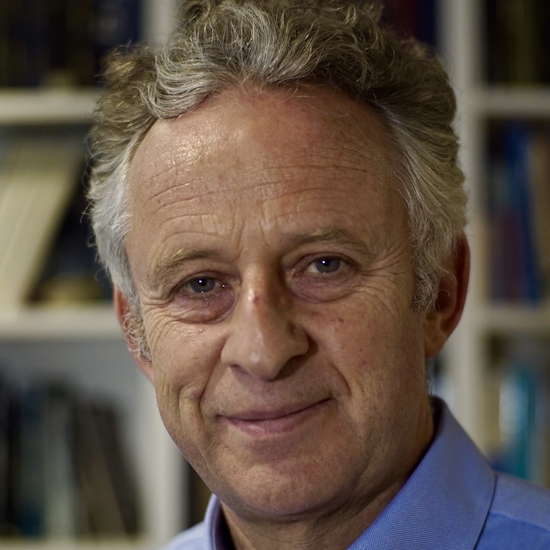
Professor Sir Richard Friend FREng FRS, University of Cambridge, UK

Professor Sir Richard Friend FREng FRS, University of Cambridge, UK
Richard Friend holds the Cavendish Professorship of Physics at the University of Cambridge. His research encompasses the physics, materials science and engineering of carbon-based semiconductors, particularly polymers. His research advances have shown that these have significant applications in LEDs, solar cells and FETs. These findings have been important both for fundamental science, because they reveal new regimes and models for semiconductor behaviour, and for real applications that have been developed and exploited through a number of university spin-off companies. The first of these, Cambridge Display Technology, now part of the Sumitomo Chemical Company, developed fully printable organic LEDs for use in high resolution displays that are now commercialized and used in current OLED displays. His current research interests are directed to novel schemes – including ideas inspired by recent insights into Nature’s light harvesting – that seek to understand and improve the performance and cost of solar cells.
| 08:55-09:00 |
Chair’s Introduction
|
|---|---|
| 09:00-09:00 |
On the role of aggregates in the process of exciton dissociation for solar cells
The performance of efficient organic solar cells depends critically on the morphology of the active layer. The recent high efficiencies reported for blend cells made with PM6 and Y6 testify to this. Both, electron-hole separation and charge carrier transport to the electrodes benefit from the formation of suitable aggregates or crystallites. Anna Köhler will demonstrate how aggregates may be identified in organic solar cells. Using blends of PM6 with the non-fullerene acceptor Y6 as suitable model systems the author will illustrate the use of temperature dependent absorption and emission spectroscopy in solutions as necessary first step to obtain insight into the structures prevailing in a blend film. By combining the spectra obtained in solution with a careful Franck-Condon analysis of the thin film spectra, contribution from different aggregates are identified. Professor Köhler will also discuss the role of excited state delocalisation across aggregates versus the impact of static and dynamic disorder. Temperature-dependent measurements on solar cells as well as Monte-Carlo simulations are employed to determine the activation energy for exciton dissociation and to relate this to the film morphology and exciton binding energy. She will highlight the fact that for a high dissociation rate, the activation energy for photocurrent generation is not a measure for the exciton binding energy. 
Professor Dr Anna Köhler FRSC, University of Bayreuth, Germany

Professor Dr Anna Köhler FRSC, University of Bayreuth, GermanyThe research of Anna Köhler is concerned with photophysical processes in organic semiconductors. She focusses on energy and charge transfer in singlet and triplet excited states, the exciton dissociation mechanism and intermolecular interactions. She received her PhD in 1996 from the University of Cambridge, UK. After research fellowships by Peterhouse, Cambridge, and the Royal Society, UK, she moved to Germany for professorships, first in 2003 to Potsdam and in 2007 to Bayreuth. She leads an international Research Training Group “Optical Excitations in organic and inorganic semiconductors (OPTEXC)” between the University of Bayreuth, The University of Melbourne and Monash University and a European Doctoral Training Network “TADFsolution - addressing the challenges of high-performance solution-processed OLEDs using sustainable materials". In 2020 she was awarded the Max-Born-Prize, given jointly by the German Physical Society and the Institute of Physics, UK, and in 2022 she was elected member of the Bayrische Akademie der Wissenschaften. |
| 09:30-09:45 |
Discussion
|
| 09:45-10:15 |
Sub-gap and tail states in organic semiconductors
Excitons in organic semiconductors can decay radiatively or dissociate into free charge carriers at an interface, both with near unity quantum efficiencies. In these processes, electronic states within the optical gap of the material play an important role and often provide efficiency-limiting, non-radiative decay pathways for excitons and charge carriers. In this contribution, Koen Vandewal will describe their efforts to characterize these tail- and sub-gap states, including charge-transfer and triplet states, using highly sensitive emission and absorption spectroscopy. For organic semiconductor blends with strongly reduced non-radiative losses, time-resolved emission spectroscopy at nanosecond to millisecond timescale is further an excellent probe for the recombination dynamics and interplay between free carriers, charge-transfer states and triplet states. The author will discuss the molecular and morphological factors which are responsible for an efficient charge generation and reduced non-radiative recombination and provide guidelines for future high efficiency organic opto-electronic devices. 
Professor Koen Vandewal, Hasselt University, Belgium

Professor Koen Vandewal, Hasselt University, BelgiumKoen Vandewal obtained his PhD in Physics at Hasselt University in 2009 on the device physics of organic photovoltaics. After that, he has been working for two years as a Postdoctoral Fellow at Linkoping University in Sweden and another two years at Stanford University in the US. In 2014, he was appointed as endowed professor at the Technische Universitaet (TU) Dresden in Germany. In January 2018, he moved from TU Dresden to Hasselt University leading a research group with the aim to solve fundamental questions in the field of organic, hybrid and molecular electronics with relevance to applications in opto-electronic devices such as organic light emitting diodes, solar cells, energy conversion devices and sensors. |
| 10:15-10:30 |
Discussion
|
| 10:30-11:00 |
Break
|
| 11:00-11:30 |
Charge Generation in Neat Non-Fullerene Acceptor Domains
Non-fullerene acceptors (NFAs) are exciting molecules allowing high efficiency in organic photovoltaic (OPV) blends with conjugated polymers. Interestingly, charges can also be generated by neat NFA films without additional donor. To understand the origins of exciton dissociation in neat NFAs, the authors have looked at the impact of aggregation, external electric field end non-linear effects. They used solvatochromism in order to gain insight on charge redistribution after excitation in isolated NFAs. The scientists found that unaggregated NFAs feature a more dipolar excited state, revealing intramolecular charge transfer (ICT) character. This ICT character, however, is not enough to generate separated charges. Aggregation is the key to exciton dissociation in neat NFAs, which we observe with TA of solutions and films of several different NFAs. To explore the impact of an electric field on exciton dissociation in neat NFA devices, the authors used bias-dependent external quantum efficiency (EQE) and transient absorption (TA) spectroscopy. Electromodulated differential absorption (EDA) measurements then allowed us to observe charge transport under bias. Excitation correlation spectroscopy and fluence-dependent TA finally revealed how non-linear effects can increase the charge yield. Lastly, they comment on whether the neat domain charge generation significantly affects the photophysics of blends or not. 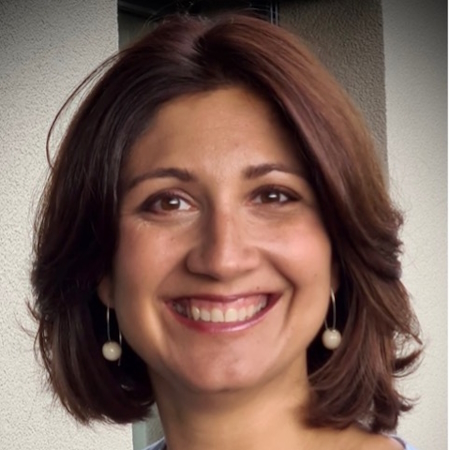
Professor Dr Natalie Banerji, University of Bern, Switzerland

Professor Dr Natalie Banerji, University of Bern, SwitzerlandNatalie Banerji is currently a Full Professor of Physical Chemistry at the University of Bern. Her research interests include the study of organic and hybrid materials using ultrafast spectroscopic techniques, in view of solar cell and bioelectronic applications. She studied Chemistry at the University of Geneva and obtained her PhD in Physical Chemistry in 2009, under the supervision of Professor Eric Vauthey. She then moved to the University of California in Santa Barbara (USA), to work on organic solar cells during a post-doctoral stay with Nobel Laureate Professor Alan J Heeger (2009-2011). In 2011, she was given the opportunity to start her independent research career in Switzerland at the Ecole Polytechnique Férérale de Lausanne (EPFL) with an Ambizione Fellowship by the Swiss National Science Foundation (SNSF). She obtained an SNSF-Professorship at the University of Fribourg (Switzerland) in 2014, and was subsequently nominated tenured Associate Professor in 2015. She was President of the Chemistry Department in Fribourg from 2016-2017 and moved to Bern in 2017. In 2015, she obtained the Grammaticakis-Neumann Prize (Swiss Chemical Society) and in 2016, she was awarded an ERC Starting Grant. She is currently also part of the Swiss Research Council and Associate Editor of ACS Materials Letters. |
| 11:30-11:45 |
Discussion
|
| 11:45-12:15 |
Approaches to homojunction solar cells
Photocurrent generation in organic photovoltaic (OPV) devices is driven by the creation and subsequent separation of excitons into free electrons and holes. To do this effectively generally requires mixing one or more “donor” and “acceptor” materials with differing ionisation potentials and electron affinities to overcome the exciton binding energy. While efficient organic solar cells can be formed using this approach it can be difficult to scale laboratory efficiencies to cells with submodule dimensions. Furthermore, metastable blend morphologies that give rise to highly efficient devices may change over time leading to a decrease in performance. There would therefore be an advantage of having efficient homojunction devices composed of a single absorbing chromophore. Materials with low exciton binding energies such as silicon and three-dimensional perovskites generate free charge carriers directly upon photoexcitation at room temperature. The binding energy of an exciton is dependent on a number of factors, including being proportional to the inverse square of the dielectric constant. Hence, one strategy to develop homojunction organic solar cells is to increase the dielectric constant of the organic semiconducting materials. This presentation will describe the development of materials that have been engineered with the aim of understanding how to improve exciton dissociation. Approaches to be discussed include methods of increasing the dielectric constant to decrease the exciton binding energy. The synthesis of the materials and their optoelectronic properties will be described, with a particular focus on the factors that affect the dielectric constant. 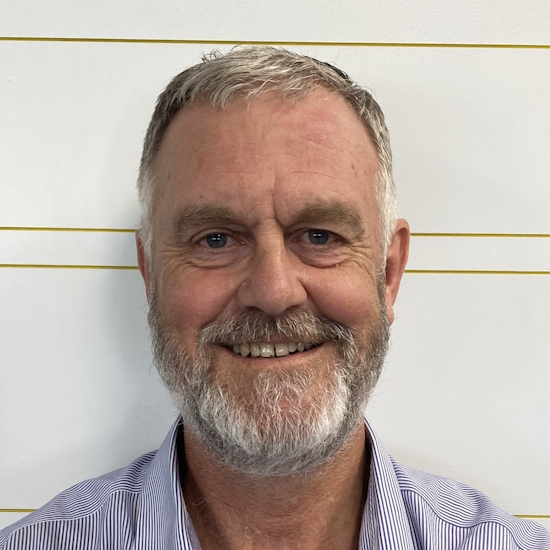
Professor Paul Burn, University of Queensland, Australia

Professor Paul Burn, University of Queensland, AustraliaProfessor Burn is Director of the Centre for Organic Photonics & Electronics (COPE) and a UQ Laureate Fellow at The University of Queensland (UQ), Australia. He undertook his PhD at the University of Sydney (Australia) before moving to Cambridge University (UK), first as a postdoctoral researcher and subsequently as the Dow Research Fellow at Christ’s College (Cambridge). He then moved to a Lectureship at Oxford University and Hellen Martin Fellowship in Organic Chemistry at University College (Oxford). He moved to the University of Queensland in 2007 as an Australian Research Council Federation Fellow. His research focuses on the development and application of organic semiconductor materials. His research team has worked on non-polymeric materials, dendrimers, poly(dendrimer)s and polymers for applications including light-emitting diodes, transistors, photodiodes, solar cells, and chemical sensors. He has commercialised his research through co-founding Cambridge Display Technology Ltd, Arborescent2 Ltd, and most recently Arborescent Pty Ltd. |
| 12:15-12:30 |
Discussion
|
| 12:30-13:30 |
Lunch
|
Chair
Professor Eric Bittner, University of Houston, USA.
Professor Eric Bittner, University of Houston, USA.
Eric Bittner obtained his BS in chemistry and in physics from Valparaiso University in 1988 and his PhD at the University of Chicago in 1994. Since 2009, Bittner is Moores Distinguished Professor of Chemical Physics at the University of Houston and was the Leverhulme Trust Visiting Professor at Durham University. He is a fellow of the Royal Society of Chemistry and the American Physical Society. His research focuses upon developing theoretical and computational descriptions of quantum dynamics in molecular systems, especially for their use in understanding the migration of energy and charge in molecular electronic excited states.
| 13:30-13:35 |
Chair’s Introduction
|
|---|---|
| 13:35-14:05 |
Second-order photon cross correlations and signatures of quantum behaviour of excitonic systems
Professor Alexandra Olaya-Castro, University College London (UCL), UK
Professor Alexandra Olaya-Castro, University College London (UCL), UKAlexandra Olaya-Castro earned a DPhil in Physics from the University of Oxford in 2006 and subsequently obtained a Junior Research Fellowship at Trinity College, University of Oxford. In 2008 she moved to University College London with an EPSRC Career Acceleration Fellowship. She became a Lecturer in 2011, was promoted to Reader in 2015 and became a Professor of Physics in 2018. Her research interests are focused on theoretical approaches to bridge quantum science and biophysics. She is a leading expert in the area of quantum effects in biomolecules and her theoretical contributions to this field made her the recipient of the 2016 Maxwell Medal and Prize by the Institute of Physics in London. |
| 14:05-14:20 |
Discussion
|
| 14:20-14:50 |
Singlet fission and triplet-triplet annihilation in organic semiconductors and biological systems
The efficiency of single-junction solar cells is fundamentally limited to approximately 30%. To address this limitation, excitonic up and down conversion processes have emerged as a promising solution. Specifically, singlet exciton fission, where a spin-0 excited state produces two separate excitonic triplet states, can effectively generate two low-energy excitons per absorbed photon. Alternatively, triplet fusion or triplet-triplet annihilation combines two low-energy excitonic states into a high-energy excited state. Here, the author will present recent findings on the fundamental physics of singlet fission and triplet-triplet annihilation from their group's investigations in both organic semiconductor and biological systems, including discussing the impact of strong light-matter coupling (polariton formation). 
Professor Jenny Clark, University of Sheffield, UK

Professor Jenny Clark, University of Sheffield, UKJenny Clark, professor in physics at the University of Sheffield, obtained her PhD from the University of Cambridge in 2007 on intermolecular interactions in pi-conjugated molecules. She then worked on ultrafast all-optical switching in polymer optical fibers with Prof. Guglielmo Lanzani in Milan before returning to Cambridge to research singlet fission in carotenoids, polyenes and acenes. After maternity leave in 2012-14, she joined the University of Sheffield in 2015 on an Advanced Vice Chancellor’s Fellowship. Her current research focuses on singlet fission, photosynthesis, polaritonics and the spectroscopy of triplet pair states. |
| 14:50-15:05 |
Discussion
|
| 15:05-15:30 |
Break
|
| 15:30-16:00 |
Photosynthesis beyond the red limit
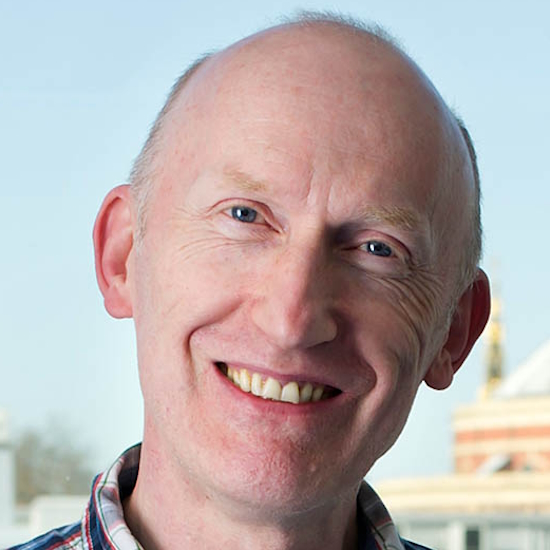
Professor Bill Rutherford FRS, Imperial College London, UK

Professor Bill Rutherford FRS, Imperial College London, UKBill Rutherford explores the structure and function of photosynthetic reaction centres — the biological machinery that converts solar energy into the chemical energy that powers life. Bill’s major interest is photosystem II (PSII), the enzyme in plants that splits water to provide electrons for carbon fixation. Oxygen, the side-product of water oxidation, accumulated in the atmosphere and changed the world. Using biophysical methods, he was one of the first to recognise the similarity between PSII and simpler reaction centres that are incapable of water oxidation. He subsequently worked to reveal the distinctive features of PSII, making comparisons with other reaction centres and providing influential models of structure, mechanism and evolution. Bill’s research is relevant to the current urgent need for non-fossil energy sources. Water-splitting catalysts are required for making fuels from solar energy. These efforts at mimicking the reactions of photosynthesis often use the active site of PSII as a benchmark and blueprint. Bill’s work on energy flows in photosynthesis is particularly relevant to efforts to improve its efficiency for more sustainable food production. |
| 16:15-17:00 |
Panel discussion
|

